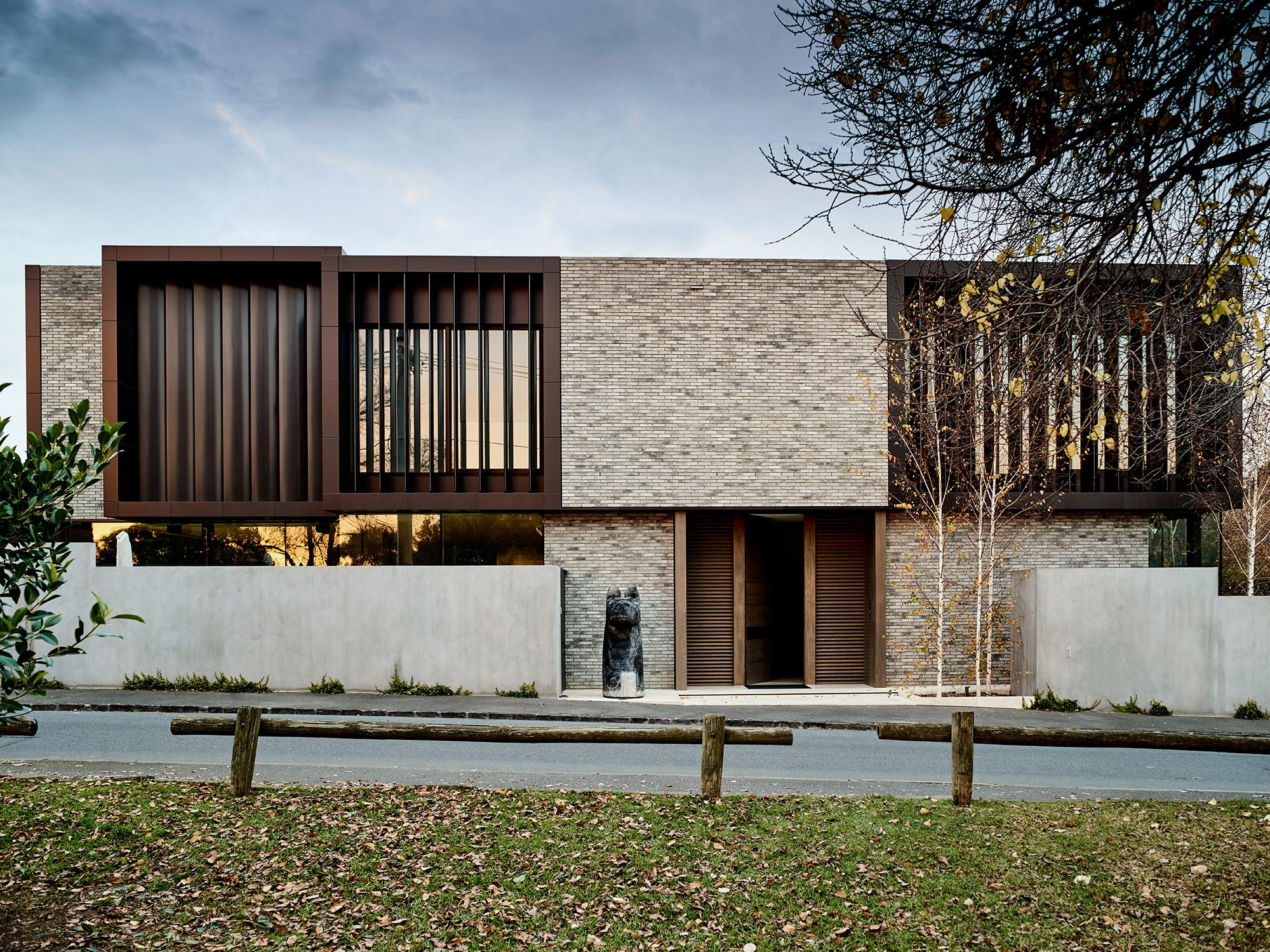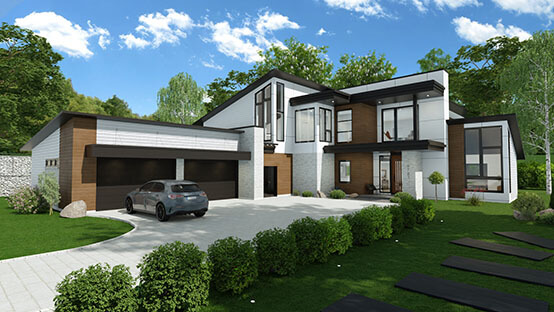Residential Architecture Homes Designed for Comfort, Aesthetics, and Functionality
Residential Architecture Homes Designed for Comfort, Aesthetics, and Functionality
Blog Article
Leading Patterns in Residential Architecture You Ought To Understand About
As household architecture remains to advance, several compelling trends are forming the way we design and occupy our space. Trick advancements such as sustainable structure methods, the integration of wise home innovation, and the rise of modular homes emphasize a significant shift towards both performance and ecological obligation. Furthermore, concepts like open plan living and biophilic style are redefining our communication with space and nature. Understanding these fads not only educates layout choices yet also exposes more comprehensive implications for lifestyle and community - residential house architect. What might these innovations indicate for the future of residential living?
Sustainable Building Practices
An increasing number of property projects are accepting lasting building methods, driven by an expanding awareness of ecological effect and energy efficiency. This shift is defined by the assimilation of environmentally friendly products, energy-efficient designs, and ingenious construction approaches. Home owners and builders are significantly prioritizing using renewable energies, such as bamboo and recycled metals, which not just minimize the carbon footprint yet additionally boost the resilience and visual appeal of homes.
Incorporating energy-efficient systems is another crucial aspect of lasting building - residential house architect. Functions such as high-performance insulation, energy-efficient home windows, and photovoltaic panels are ending up being standard in new residential designs. These aspects not only add to lower power consumption but additionally supply significant long-term financial savings for homeowners
Additionally, the format of sustainable homes commonly highlights all-natural light and ventilation, reducing the dependence on fabricated lighting and environment control systems. Landscaping techniques, such as xeriscaping, more advertise sustainability by decreasing water usage.
As the demand for lasting living solutions remains to climb, the household style sector is poised to adapt and introduce, making sure that future homes are not only eco accountable but useful and additionally comfy for their owners. - residential house architect
Smart Home Modern Technology
Smart home modern technology is reinventing the method house owners communicate with their space, boosting convenience, safety, and energy administration. This innovative approach incorporates numerous devices and systems, permitting customers to regulate their homes remotely or via automated procedures. Central to this trend is using clever tools such as thermostats, lighting, safety and security cams, and devices, all linked via the Web of Things (IoT)
Among the most enticing attributes of smart home innovation is the ability to tailor settings for ideal power efficiency. Home owners can keep an eye on power use and change home heating, lighting, and air conditioning based upon their regimens, significantly decreasing energy expenses. Innovative security systems outfitted with wise locks and surveillance electronic cameras supply peace of mind, making it possible for remote surveillance and alerts to potential security violations.
Assimilation with voice-activated assistants boosts user experience, allowing home owners to control tools with straightforward voice commands. As innovation continues to evolve, the capacity for smart home systems to improve lifestyle expands, making them a necessary consideration in modern property design. Ultimately, clever home modern technology is not simply a fad however an essential shift toward extra intelligent living environments.
Open Principle Living
Open idea living has actually arised as a defining attribute browse around these guys in modern domestic architecture, identified by the elimination of standard barriers between areas. This design approach promotes fluidness and connectivity within the home, permitting a seamless change between areas such as the kitchen, eating, and living areas. By getting rid of wall surfaces and dividings, open idea formats develop a sense of space, promoting an inviting atmosphere that enhances social interaction.

Moreover, this approach to property layout lines up with minimalism, focusing on practical simplicity and aesthetic coherence. House owners value the adaptability of these layouts, which can be quickly adapted to mirror individual style through furnishings plan and design. As open idea living continues to gain traction, it continues to be a testimony to evolving family characteristics and the desire for homes that enhance connection and comfort.
Biophilic Style
Biophilic design has come to be increasingly considerable in household design, stressing the innate link between humans and nature. This layout philosophy seeks to incorporate natural aspects into living spaces, thus cultivating a sense of wellness and enhancing the quality of life for occupants. By including features such as all-natural light, greenery, and natural materials, biophilic style promotes an unified partnership between indoor atmospheres and the natural globe.
Crucial element of biophilic design consist of big home windows that supply unhampered sights of outdoor landscapes, living walls that present greenery into insides, and open layout that urge air movement and natural light infiltration. Water functions, both inside and outside the home, offer Discover More to produce soothing atmospheres and boost sensory experiences.
Moreover, using sustainable products not just sustains environmental stewardship yet additionally contributes to much healthier indoor air quality. As understanding of ecological concerns boosts, homeowners are progressively prioritizing layouts that reflect their connection to nature. Basically, biophilic style not just boosts aesthetic charm however additionally addresses psychological and emotional requirements, making it an essential trend in modern residential design.
Modular and Prefab Houses

Moreover, prefab and modular homes are developed with sustainability in mind. Several producers make use of energy-efficient systems and green products, such as photovoltaic panels and advanced insulation strategies, visit adding to reduced energy usage and lower utility bills for property owners. The versatility of design alternatives permits modification, providing to diverse functional demands and visual choices.
As the demand for economical real estate remains to climb, prefab and modular homes provide a feasible solution, addressing both financial and ecological obstacles. Areas are significantly recognizing the capacity of these frameworks, incorporating them into urban and rural settings. In general, the pattern toward prefab and modular homes indicates a shift towards extra sustainable, effective, and versatile living environments, making them a pivotal aspect of modern household style.
Final Thought
Lasting structure methods and smart home innovations boost effectiveness and convenience, while open idea living and biophilic style foster social interaction and a connection to nature. The increase of modular and prefab homes supplies adjustable and economical remedies, mirroring a wider shift towards practical and liable living.
Key advancements such as sustainable structure methods, the integration of clever home modern technology, and the rise of modular homes highlight a considerable shift in the direction of both functionality and environmental obligation.The rise of prefab and modular homes has changed the domestic design landscape, supplying innovative solutions for effective and sustainable living.Furthermore, modular and prefab homes are designed with sustainability in mind. Overall, the fad towards modular and prefab homes signifies a change toward a lot more lasting, efficient, and versatile living settings, making them a critical facet of contemporary residential style.
Sustainable building techniques and clever home technologies boost efficiency and ease, while open concept living and biophilic style foster social interaction and a connection to nature.
Report this page